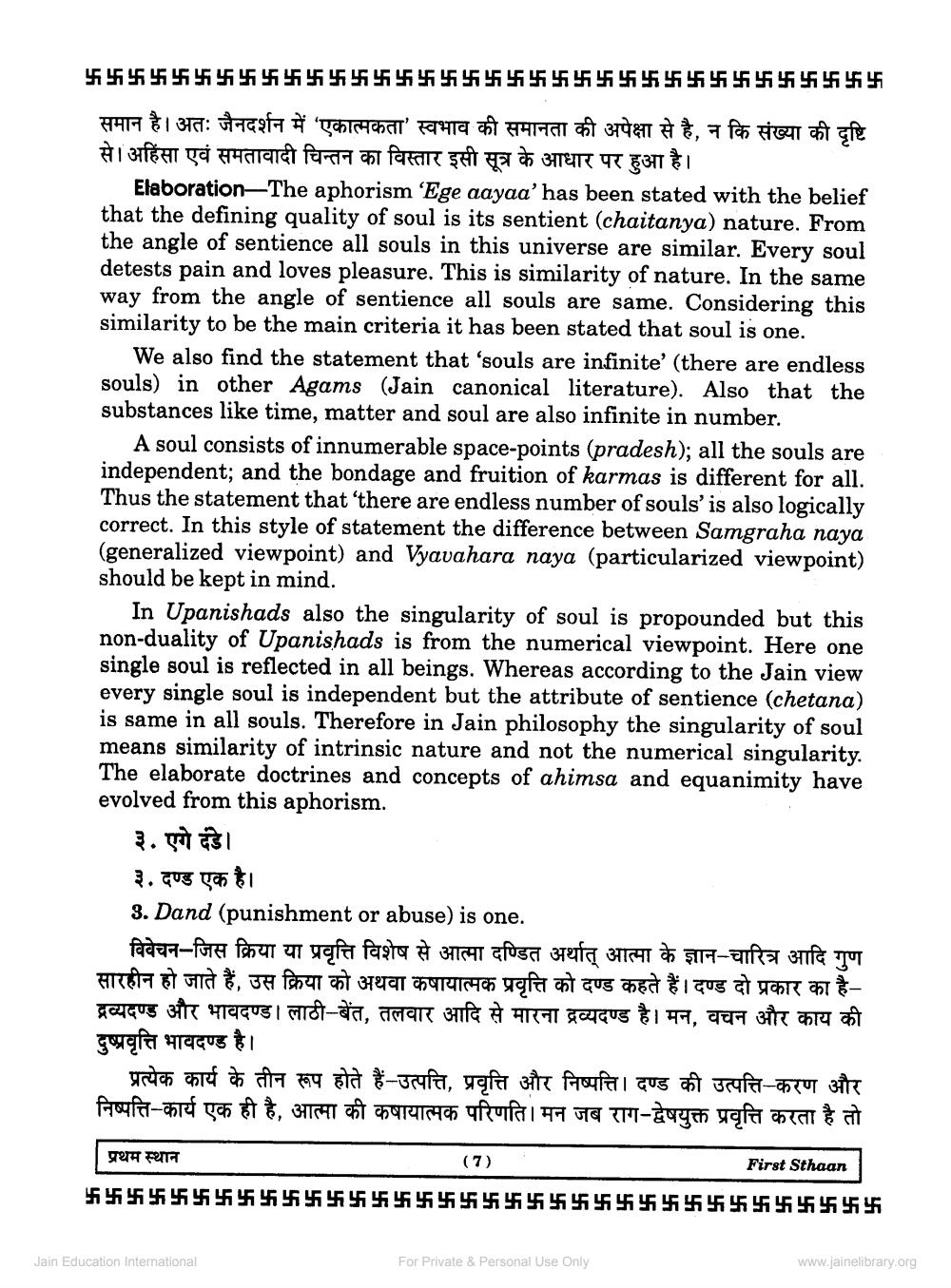________________
95555555555555555555555555555555555
समान है। अतः जैनदर्शन में 'एकात्मकता' स्वभाव की समानता की अपेक्षा से है, न कि संख्या की दृष्टि से। अहिंसा एवं समतावादी चिन्तन का विस्तार इसी सूत्र के आधार पर हुआ है।
Elaboration—The aphorism 'Ege aayaa' has been stated with the belief that the defining quality of soul is its sentient (chaitanya) nature. From the angle of sentience all souls in this universe are similar. Every soul detests pain and loves pleasure. This is similarity of nature. In the same way from the angle of sentience all souls are same. Considering this similarity to be the main criteria it has been stated that soul is one.
We also find the statement that 'souls are infinite' (there are endless souls) in other Agams (Jain canonical literature). Also that the substances like time, matter and soul are also infinite in number.
A soul consists of innumerable space-points (pradesh); all the souls are independent; and the bondage and fruition of karmas is different for all. Thus the statement that 'there are endless number of souls' is also logically correct. In this style of statement the difference between Samgraha naya (generalized viewpoint) and Vyavahara naya (particularized viewpoint) should be kept in mind.
In Upanishads also the singularity of soul is propounded but this non-duality of Upanishads is from the numerical viewpoint. Here one single soul is reflected in all beings. Whereas according to the Jain view every single soul is independent but the attribute of sentience (chetana) is same in all souls. Therefore in Jain philosophy the singularity of soul means similarity of intrinsic nature and not the numerical singularity. The elaborate doctrines and concepts of ahimsa and equanimity have evolved from this aphorism.
३. एगे दंडे। ३. दण्ड एक है। 3. Dand (punishment or abuse) is one.
विवेचन-जिस क्रिया या प्रवृत्ति विशेष से आत्मा दण्डित अर्थात् आत्मा के ज्ञान-चारित्र आदि गुण सारहीन हो जाते हैं, उस क्रिया को अथवा कषायात्मक प्रवृत्ति को दण्ड कहते हैं। दण्ड दो प्रकार का हैद्रव्यदण्ड और भावदण्ड। लाठी-बेंत, तलवार आदि से मारना द्रव्यदण्ड है। मन, वचन और काय की दुष्प्रवृत्ति भावदण्ड है।
प्रत्येक कार्य के तीन रूप होते हैं-उत्पत्ति, प्रवृत्ति और निष्पत्ति। दण्ड की उत्पत्ति-करण और निष्पत्ति-कार्य एक ही है, आत्मा की कषायात्मक परिणति। मन जब राग-द्वेषयुक्त प्रवृत्ति करता है तो
प्रथम स्थान
(7)
First Sthaan
For Private & Personal Use Only
Jain Education International
www.jainelibrary.org




